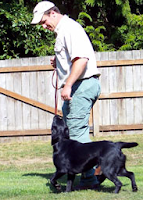 Don't Litter - Spay Neuter
Don't Litter - Spay Neuter
Guest Blogger Janet Gray, DVM shares insights on the topic of spaying and neutering dogs and cats. Dr. Gray is Lead Veterinarian for the Feral Cat Spay/Neuter Project.
I received an urgent call one morning last week. A cat had given birth to a single kitten 2
days prior, but had done nothing since: had not eaten, gone to the litter box,
or moved around much. An x-ray done at
another veterinary clinic revealed a kitten stuck in the birth canal. The cat was in bad shape. Could we help?
I spend my days spaying and neutering cats. “Spaying” is the common term for an ovariohysterectomy,
the removal of the ovaries and uterus (the reproductive structures) of the female,
and “neutering” refers to the removal of the testicles of a male.
Preventing problems during the birth of puppies or kittens
is only one of the potential health benefits of spaying your pet. I often hear clients who want their kids to
experience the “miracle of birth.” Today
we have the luxury of YouTube and other video mediums which make it extremely
easy for kids to “experience” that miracle at the computer screen without
adding to the companion animal overpopulation problem. Not many people think that their pet is going
to have problems while having puppies or kittens, and even fewer are prepared
for the costs associated with complications.
Still-births, dystocia (“difficult birth,” like what this cat
experienced), and infections can affect the health, and even risk the life of
your pet.
 Pyometria is the term for an infected uterus (it means literally
“pus in the uterus”). It is not uncommon
to find a pyometra in a cat that the owner thought was completely healthy. Cats hide illness well. Dogs usually give us a better signal that
something is wrong, by not eating, moping around, and sometimes having
discharge from their vulva. Pyometras
can be life threatening, and they usually occur after a heat cycle. Spaying eliminates the risk entirely.
Pyometria is the term for an infected uterus (it means literally
“pus in the uterus”). It is not uncommon
to find a pyometra in a cat that the owner thought was completely healthy. Cats hide illness well. Dogs usually give us a better signal that
something is wrong, by not eating, moping around, and sometimes having
discharge from their vulva. Pyometras
can be life threatening, and they usually occur after a heat cycle. Spaying eliminates the risk entirely.
Contrary to often-held beliefs, females do not benefit from
having a litter or even from going into heat, prior to being spayed. Dogs spayed prior to their first heat cycle
have very little risk of mammary cancer.
Dogs spayed later in life have a much higher risk of mammary tumors. Female hormones can stimulate mammary cancer
growth in dogs, similar to the link between estrogen and breast cancer in women.
 Neutering also can diminish the risk of prostate disease and
testicular cancer. The first (and often
only) treatment of enlarged prostate (which can result in painful or difficult
urination) in unaltered males is to neuter them. Once the hormonal stimulation is gone, the
prostate shrinks.
Neutering also can diminish the risk of prostate disease and
testicular cancer. The first (and often
only) treatment of enlarged prostate (which can result in painful or difficult
urination) in unaltered males is to neuter them. Once the hormonal stimulation is gone, the
prostate shrinks.
There are still millions of dogs and cats being euthanized in
shelters simply because there are not enough homes for them. Please consider spaying and neutering your
pets not only for their health, but for the prevention of litters of puppies
and kittens. Puppies and kittens are
cute, and you may find homes for them, but that means those homes are no longer
available for dogs and cats already in shelters.
So what happened to the cat with the kitten stuck in the
birth canal? The cat had surgery and the
kitten was removed, no longer alive. The
mom cat was then spayed. The baby born 2
days earlier did not survive either, likely because mom did not feel well
enough to care for him the first 2 days of his life. The owners were relieved that they did not
lose their beloved “mom” cat.



























